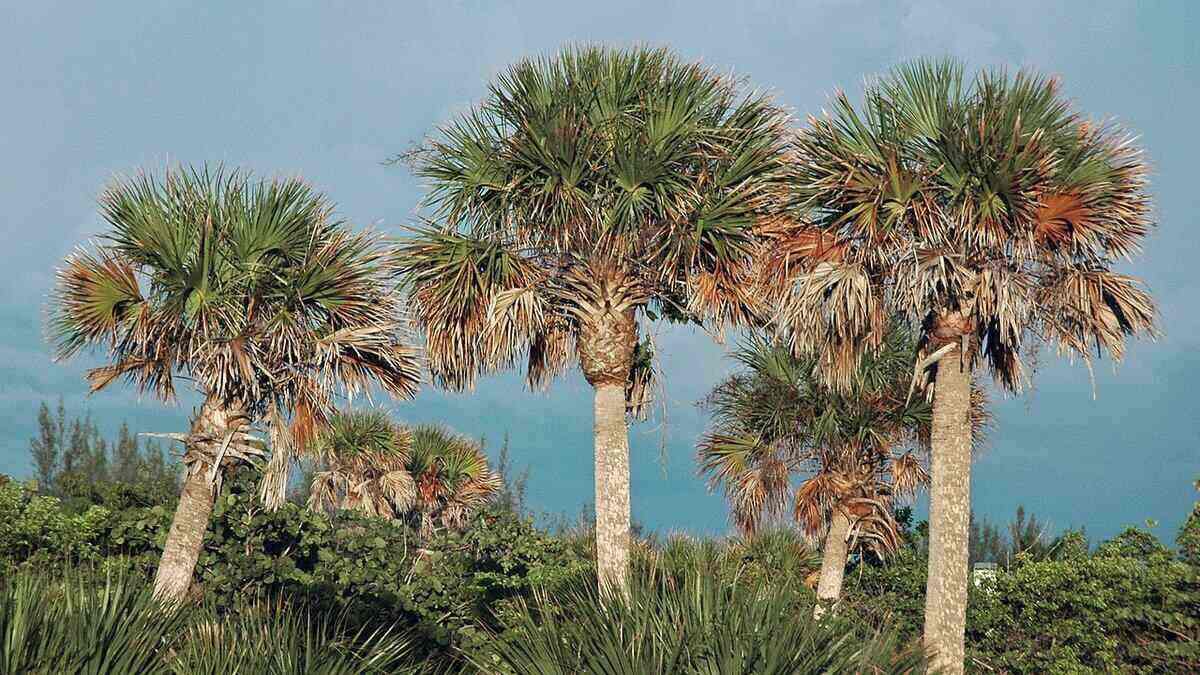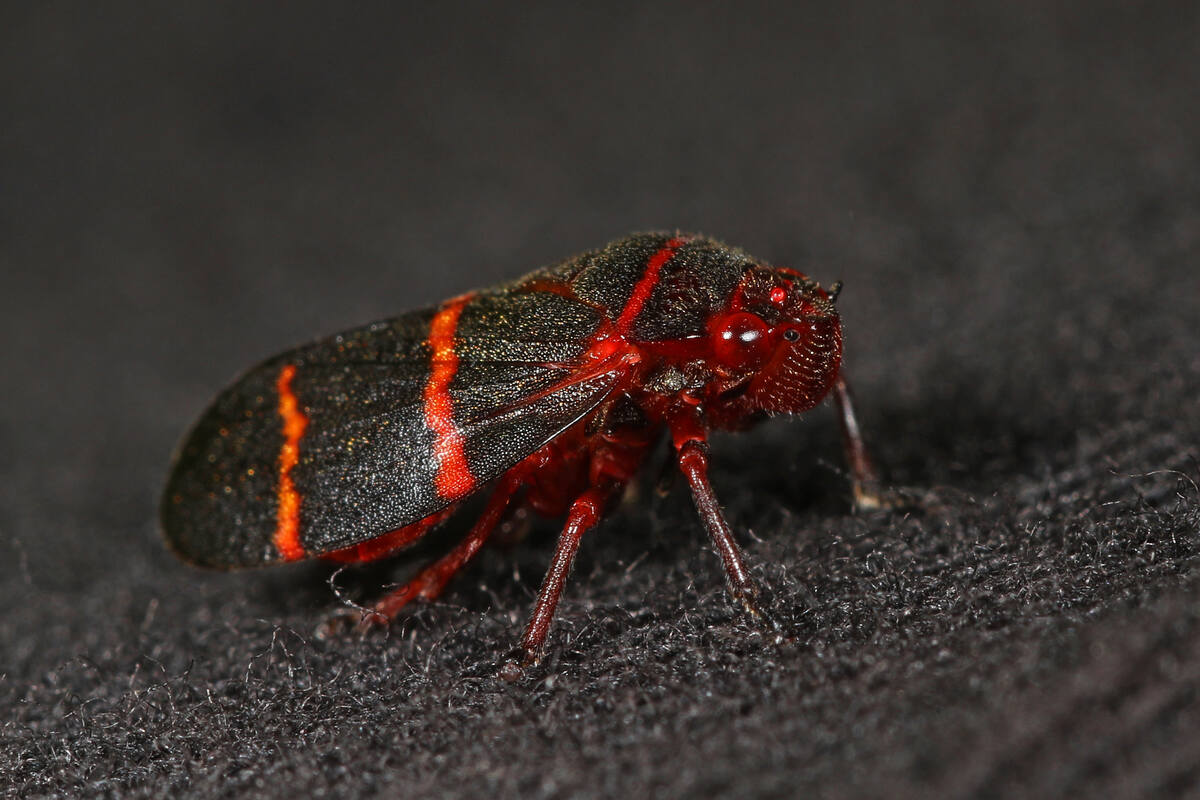
The Sunshine State is home to stunning green lawns, swaying palm trees, and rippling pools. But when a hungry pest eats your yard for dinner, there’s trouble in paradise. Learn how to get rid of Florida lawn pests to keep your grass looking beautiful. We cover every detail in this article.
How to Get Rid of the Most Common Florida Lawn Pests
The warm tropical climate makes Florida heaven for lawn pests all year round. Recognizing the signs of infestation and applying the right treatment helps protect the lawn, limit pest damage, and reduce return rates.
Before you can choose the right pest control method, you have to know exactly which pest has taken over your lawn. Here are some of the most common lawn pests in Florida.
1. Chinch Bugs
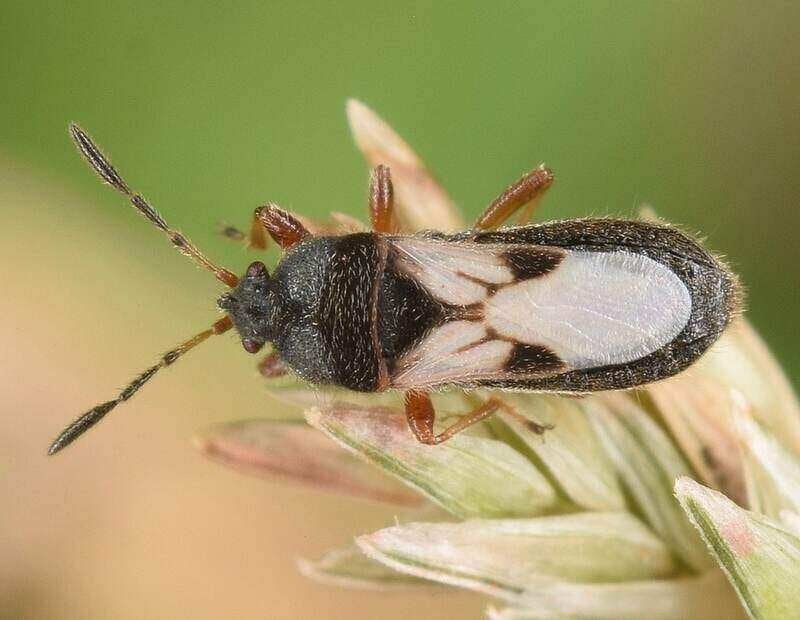
If your lawn could have lice, it would be chinch bugs. Chinch bugs are tiny insects that suck the juices out of your grass and inject a toxin that kills the plants.
Adult insects are black, about 1/5 inch long, and have white markings on their wings. Nymphs (baby chinch bugs) are tiny and wingless, with red or orange markings.
Chinch bugs are common pests in Orlando’s St. Augustine lawns but are also spread all over Florida. They enjoy various warm-season grasses but are most attracted to Zoysia and St. Augustine. Chinch bugs are active:
- From March through November in South Florida
- From April through October in North Florida
Signs of Chinch Bug Infestation
- Yellowing and burned-reddish color grass starting near hard surfaces such as driveways, sidewalks, etc.
- Dead patches on the lawn.
How to Get Rid of Chinch Bugs in Florida
Removing excessive thatch is the best way to rescue your Florida lawn from chinch bugs. The second is overseeding with a grass seed resistant to chinch bug damage.
Use pesticides as a last resort. They’ll often harm the natural predators that eat chinch bugs. If using pesticides:
- Look for a product labeled for chinch bugs.
- Lightly water the lawn after application.
- Repeat after six weeks to interrupt the chinch bug’s life cycle. There are 3 to 4 generations per year in northern Florida and 7 to 10 in southern Florida.
2. Cutworms
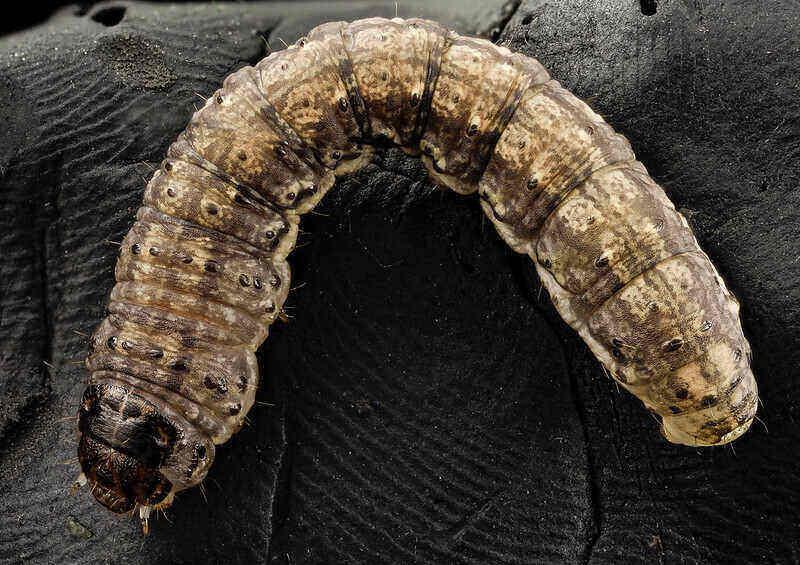
Cutworms are 2-inch-long caterpillars that chew on turfgrass near the soil surface. During the day, cutworms hide in the lawn’s thatch layer. They come out at night to feast on the grass. Cutworms are most active during the spring and early summer.
Signs of Cutworm Infestation
- Circular patches of dead grass with small burrow holes (like ball marks on putting greens). Cutworm damage is most noticeable on grass less than 1/2 inch tall.
- You’ll see birds, armadillos, raccoons, and skunks hunting on your lawn.
How to Get Rid of Cutworms in Florida
The best do-it-yourself pest control method for cutworms is thatch removal. Other popular control agents to get rid of these lawn bugs are
- Bacillus thuringiensis var. Kurstaki – A bacterium that produces a toxin that paralyzes the caterpillar’s gut and stops it from feeding.
- Steinernema carpocapsae – A nematode that penetrates the cutworm. It introduces a bacterium and causes an infection inside the host.
- Chemical insecticides that target cutworms.
These products are available at local garden centers or through local pest control companies.
Pro Tip: The University of Massachusetts Amherst recommends applying the pest control agent when the caterpillars are still small (around 1/4-inch long).
3. Fall Armyworms
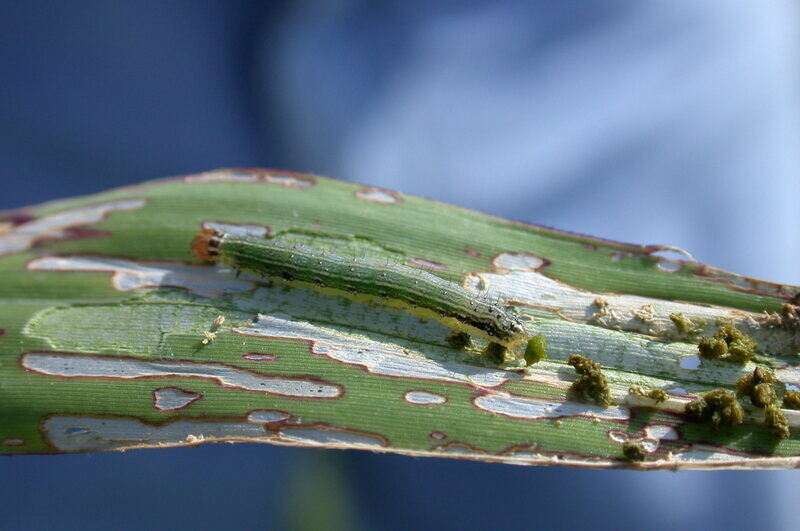
Did you wake up to a dead lawn? It could be the work of a brigade of fall armyworms. When an infestation is severe, these caterpillars can cause significant damage – fast.
Fall armyworms grow up to 1 ½ inches long, and their dark head is marked with a light-colored ‘Y.’ They often occur in large numbers, which is no surprise considering fall armyworm moths can lay up to 10 egg masses of 100 to 200 eggs each. Fall armyworms are the most active in spring and fall.
Signs of Fall Armyworm Infestation
- Large patches of dead grass.
- Adult brown moths with white-tipped forewings flying towards lights in your landscape at night.
How to Get Rid of Fall Armyworms in Florida
- Handpick armyworms and drop them in a bucket of soapy water if there are only a few.
- Install nectar-producing flower plants to attract ladybugs, parasitic wasps, lacewing, and minute pirate bugs. They are the fall armyworms’ worst nightmare.
- Introduce beneficial nematodes like Steinernema carpocapsae and Heterorhabditis bacteriophora.
- Apply Bacillus thuringiensis, a bacterium that kills armyworms in their larval stage.
- Natural pesticides, like neem oil, are a good solution to eliminate armyworms.
- If the infestation is severe, apply a pesticide labeled for caterpillar control.
4. Fire Ants
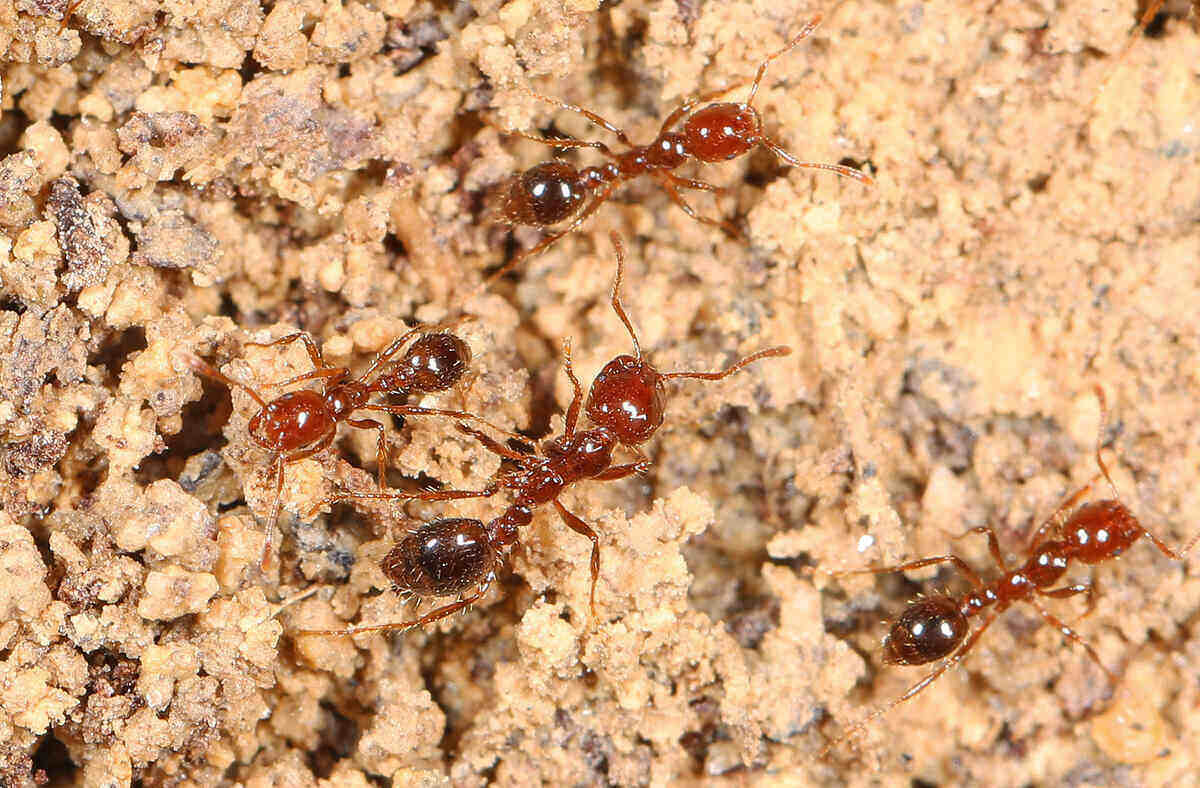
Fire ants will turn your sweet outdoor picnic sour. They’re aggressive attackers that stop at nothing to protect their nest, biting and stinging the perceived threat.
Fire ant venom is rarely fatal. But children and older adults are vulnerable to more severe reactions. Seek immediate medical attention if someone has a life-threatening allergic reaction to a fire ant sting.
These lawn insects are active year-round, but the population increases when temperatures go between 70 and 90°F.
Signs of Fire Ant Infestation
- Fire ant mounds appear as piles of aerated soil that looks like sand. Insects enter through the sides or via underground tunnels. There’s no visible entryway at the top of the ant hill.
- Their digging when building mounds causes most of the lawn damage.
How to Get Rid of Fire Ants in Florida
- Do the Texas Two-Step: The Texas AgriLife Extension Service recommends a two-step approach. First, broadcast a bait insecticide across the yard. Next, treat individual mounds with a drench, bait, granule, or dust insecticide.
- Heat some water: Pour 3 gallons of almost boiling water over the mound. This eliminates about 60% of the mounds treated.
- Hire a professional if the infestation is severe and you have difficulty removing the fire ants from your lawn or if the insects are nesting in electrical housing.
5. Ground Pearls
Pearls from the ground aren’t as desired as pearls from the water. Ground pearls are tiny scale insects that suck out the juices of your lawn’s roots.
Sometimes these pests are visible on the soil surface, but they can also hide inches underground. Ground pearls are often white, tan, or pink.
Ground pearls are active in Florida from early summer to late fall. Lawns suffering from stress, such as drought or low nutrients, are more vulnerable to ground pearl damage than healthy lawns.
Signs of Ground Pearl Infestation
- Circular patches of yellow grass that turn brown or die.
- Patches can range from a few inches to a few feet in size and slowly expand every year.
How to Get Rid of Ground Pearls in Florida
- The best way to manage ground pearls is to practice good lawn care. Healthy lawns are more likely to tolerate ground pearl activity.
- Centipedegrass is especially vulnerable to ground pearl damage. Consider replacing your centipedegrass lawn with a common Florida grass type more tolerant of ground pearls. According to the North Carolina Cooperative Extension, ‘El Toro’ Zoysiagrass and ‘Celebration’ Bermudagrass exhibit high tolerance of ground pearls.
No pesticide on the market targets ground pearls.
6. Mole Crickets
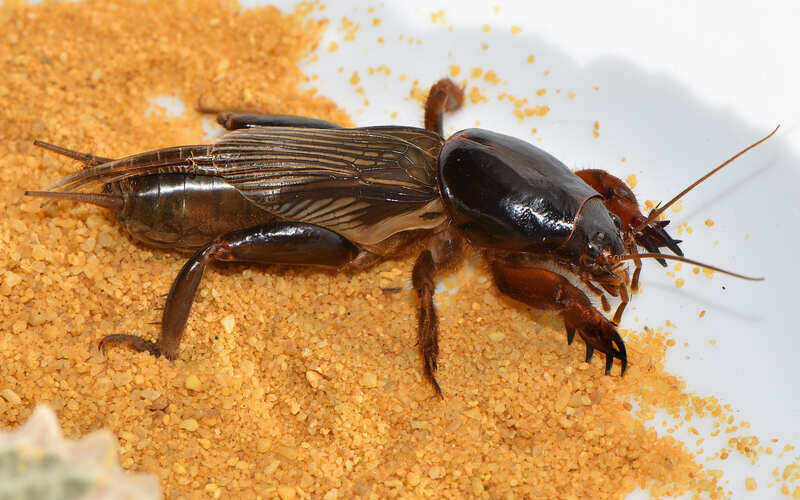
If a mole and cricket had a child, it would be the appropriately named mole cricket. Mole crickets are brown, cricket-like insects with adults about 1 ½ inches long. They have large front legs for digging, which look eerily similar to mole paws.
When mole crickets build their surface tunnels, they sever the lawn’s roots and create bulges of soil in the ground. As a result, the ground might feel spongy when you walk on it.
Mole crickets are active year-round in Florida. They do the most damage in spring and fall.
Signs of Mole Cricket Infestation
- Brown spots of dead or dying grass
- Small mounds of brown soil
- Armadillos and birds appear on your lawn hunting for food
Most tunneling and flying are done at night (these critters can fly!). So, you might not see mole crickets at work during the day. Look for tunnels early in the morning when the soil is moist.
How to Get Rid of Mole Crickets in Florida
Pest control is the most effective when mole crickets are still young nymphs. The best time to take action is:
- Early spring (March – April) and early fall (September – October). Use biological control (beneficial insects).
- June in North and Central Florida and May in South Florida are good months to try pesticides.
Biological treatments are the best and safest for your family and the environment. Mole crickets can be controlled with:
- Larra Wasps (Larra bicolor) – The Larra wasp lays its eggs on mole crickets. Its offspring feed on the insect when the eggs hatch. Each generation of Larra wasps (they have 3 a year) kills about 1/4 of the local mole cricket population.
- Parasitic nematodes – The parasitic nematode Steinernema scapterisci infiltrates the mole cricket’s body. There, it reproduces and releases a bacterium that kills the insect. Nematodes are sold online and in garden centers.
7. Tropical Sod Webworms
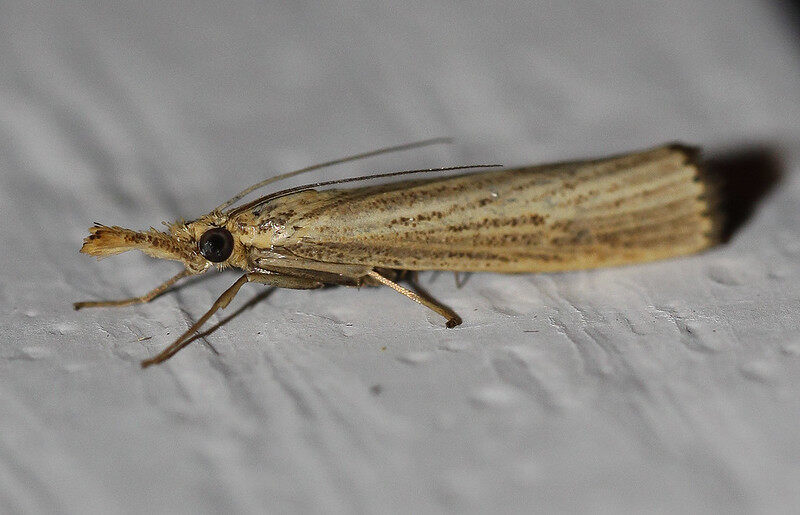
If patches of grass appear shorter than the surrounding lawn, then tropical sod webworms might be grazing your turf. These caterpillars range from 1/4 inch to 1 inch long and are grayish-green. The more grass they eat, the greener they get.
These common lawn pests are active in central and northern Florida from spring to fall. You’ll deal with them all year round in the south.
Signs of Tropical Sod Webworm Infestation
- Piles of bright green droppings.
- Thinning grass and brown patches.
- Ragged grass blades, shorter than the nearby grass.
- Grass blades are notched as if sections have been chewed off.
- The lawn has webs of grass, feces, and other debris. Caterpillars make them to prepare their cocoons.
How to Get Rid of Tropical Sod Webworms in Florida
- Improve lawn maintenance. Healthy lawns are more resistant to tropical sod webworms.
- Try the bacterial-based insecticides Bacillus thuringiensis var. kurstaki and aizawai. They may help control sod webworms without harming beneficial organisms.
- If the infestation is severe, apply a pesticide labeled for caterpillar control.
8. Two-Lined Spittlebugs
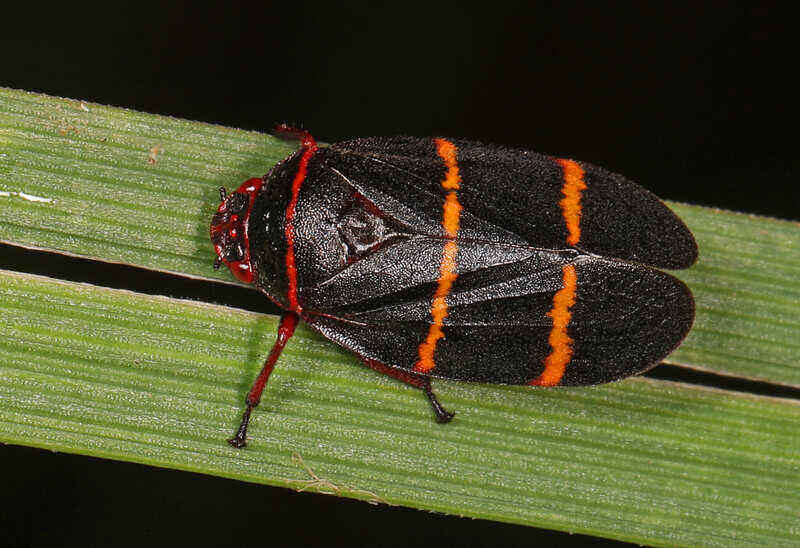
Does your lawn look covered in drool? It’s probably a case of spittlebugs. During its adult stage, the two-lined spittlebug is a tiny black insect with two horizontal orange lines across its back. The nymph is yellowish-green and protects itself in a mass of secreted spittle.
Two-lined spittlebugs are most active in spring and summer. They often infest centipedegrass but also other Florida lawn grasses.
Signs of Spittlebug Infestation
- White or purple stripes running down the grass blades.
- The grass turns yellow or brown in severe infestations and eventually dies.
How to Get Rid of Two-Lined Spittlebugs in Florida
- Keep your lawn healthy to help the grass tolerate spittlebug damage.
- Use pesticides to control a severe infestation. Chemical options for Florida lawns include pyrethroids (bifenthrin, cyfluthrin, and permethrin).
9. White Grubs
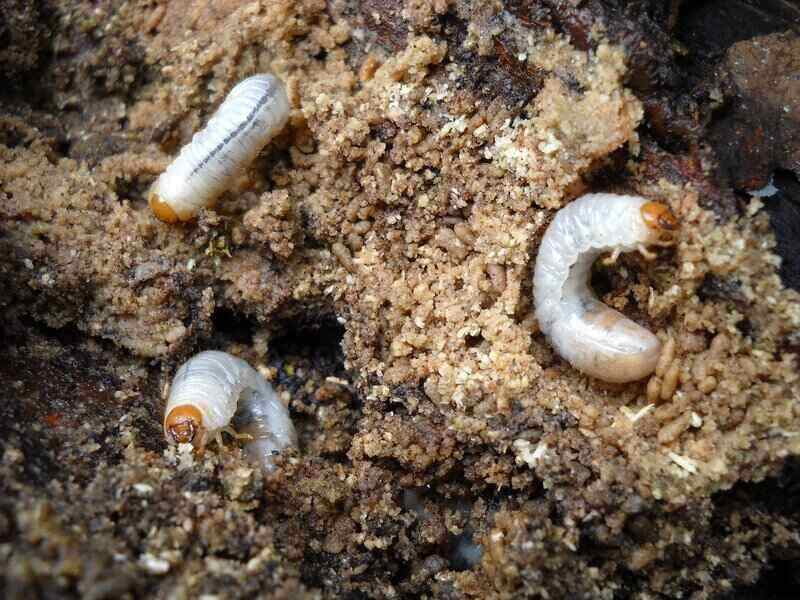
‘White grub’ is the general term for scarab beetle larvae, including:
- Chafer beetles
- Billbugs
- June beetles
- May beetles
- Japanese beetles (although Japanese beetles aren’t much of a problem in Florida)
White grubs hide underneath the soil surface, resting in a curled C-shape. They grow 1/2 an inch to 2 inches long. Grubs munch on the turfgrass’s roots, causing dead or yellow grass patches on the lawn.
White grubs are active from spring to summer. They tend to cause more damage along the Gulf and Atlantic Coasts.
Sings of White Grub Infestation
- Scattered, irregular brown patches of grass that increase in size over time.
- Heavily-infested grass pulls out from the soil easily.
How to Get Rid of White Grubs in Florida
- Apply pesticides after the eggs hatch in late summer. Grubs are easier to control when small.
- Use nematodes for white grub control. Correctly identifying the grub is necessary, which can prove challenging. Different nematode species attack different grub species. Work with a lawn pest expert to get this right.
10. Fleas
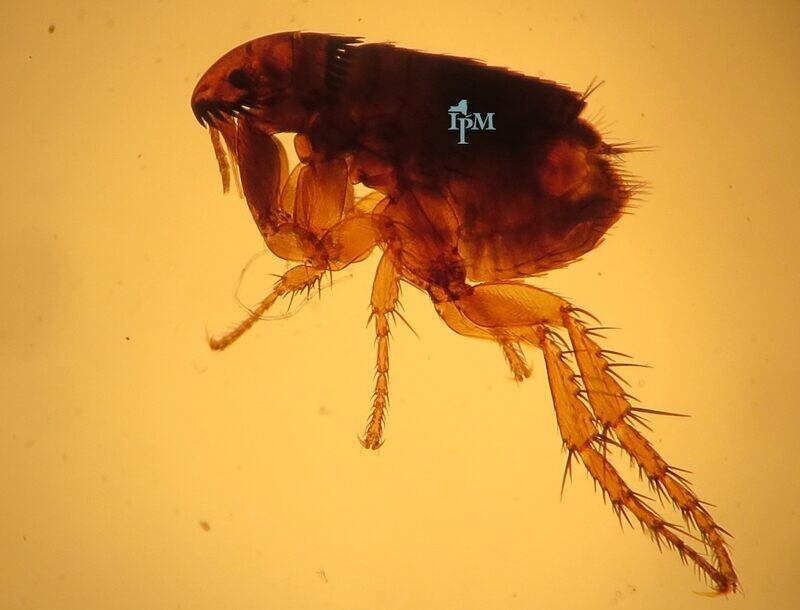
Is your dog itching and scratching while he or she plays in the yard? The grass might be infested with fleas. Fleas are blood-sucking pests that can give your pet red, itchy, flaky skin. And they bite humans, too!
Even worse – an infected flea can transmit tapeworms if the pet swallows the flea while grooming. Fleas are active in Florida all year round.
Signs of Flea Infestation
Fleas don’t damage the lawn, but you’ll see signs of their presence on your pets, such as:
- Scratching and itching
- Scabs
- Biting and chewing the skin
- Hair loss
- Irritated, red skin
How to Get Rid of Fleas in Florida
- Develop a treatment plan for your pet with a veterinarian.
- Prevent wildlife from entering the yard (build a fence and remove available food sources).
- Apply pesticides to shady areas where your pet likes to rest, such as under shrubs or porches. Use natural pesticides that are non-toxic to your pet.
11. Ticks
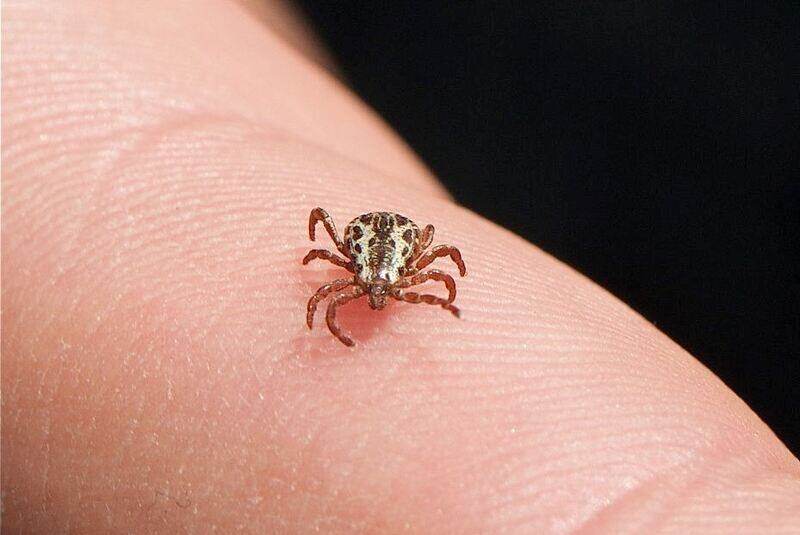
It’s normal to find a tick or two in the yard. But when you’re pulling these crawlers off your skin every time you step outside, it’s an infestation.
Ticks are blood-sucking pests that attach to the skin of humans, pets, and wildlife. They are a health hazard, carrying dangerous diseases such as Tularemia, Rocky Mountain spotted fever, canine tick paralysis, and Lyme disease.
Ticks are present year-round, especially in South Florida, but are most active in spring and summer. If you notice ticks on your lawn, deal with them quickly.
Signs of Tick Infestation
Ticks don’t harm the lawn. They use it as shelter until they catch a ride by latching onto humans or animals. Among the signs of tick-related illnesses to look for in pets and humans are:
- Fever and chills
- Headache, fatigue, muscle aches, and joint pain
- Rash
How to Get Rid of Ticks in Florida
- Remove dense vegetation from the yard and keep a regular mowing schedule.
- Keep small critters and white-tailed deer off the lawn (ticks are often attached).
- Create a barrier with gravel or mulch to prevent ticks from mobilizing.
- Place tick tubes in areas where you suspect mice activity.
- Spray acaricides in problem areas. Acaricides are a type of pesticide that targets arachnids, including ticks.
Best Methods to Prevent Pests on a Florida Lawn
Keep your Florida lawn healthy and clean. Healthy lawns are less appealing to pests and easy to maintain with a good lawn care routine. Here’s what to check on your pest-prevention lawn care list:
Mow Regularly
Tall grass provides excellent shelter for pests. Trim it regularly and at the proper height to offer less shade and moisture for nasty insects. See our lawn mowing tips for more advice on proper mowing.
Aerate and Dethatch
Thin thatch layers protect the soil from heat and drought. But when thatch builds up, it makes a perfect place for pests to nest and take shelter. If the thatch layer is over ¾ inch thick, it’s time to dethatch the lawn.
After dethatching, aerate the lawn to disrupt pests’ potential shelter even further. Aeration also improves the soil’s air, water, and nutrient absorption, making the grass healthier overall.
Solve Moisture Problems Fast
Pests love wet soils and moist environments, so don’t give them what they want. Avoid overwatering, keep the gutters clean and clear, and fix any leaks in your irrigation system to keep soil moisture in check. See our other lawn watering tips for Florida to learn how to keep your lawn’s moisture level under control.
Keep Weeds Under Control
Some weeds attract pests to your lawn, so keep the turfgrass weed-free with properly timed pre-emergent and post-emergent herbicides.
Clean the Yard
Fallen leaves, twigs, and other organic debris are a joy for insects and rodents. Don’t leave them on the lawn or nearby. Rake regularly to keep a clean environment with little to offer for pests, even during winter. For more on helping your lawn survive winter, see our winter lawn care tips for Florida.
Attract Beneficial Insects
Beneficial insects, such as ladybugs, lacewings, damsel bugs, and predatory wasps eat pest insects that attack your garden. Use plants native to Florida to attract them to your yard, such as:
- Shrubby false buttonweed, partridge pea, and white-flowered peas (they attract Larra wasps).
- Goldenrod, pigweed, and soybeans (are preferred by big-eyed bugs, predators of chinch bugs).
- Yarrow, angelica, dill, daisies, and sunflowers (are enjoyed by green lacewing, a natural enemy of cutworms).
Consult the University of Florida guide to find the best natural predator for each lawn pest.
Invite Beneficial Birds
Songbirds and hummingbirds are also attracted to nectar and pollen wildflowers. To keep them hunting on your lawn, ensure a freshwater source year-round and plant native Florida trees for shelter.
DIY Tests to Check for Lawn Pests
Depending on where they hide and feed, you can test pests’ presence DIY with:
The Drench Test
Also known as the soap flush test, homeowners can use it to check for lawn pests that hide in the thatch layer during the day, such as:
- Cutworms
- Fall armyworms
- Mole crickets
- Tropical sod webworms
- Chinch bugs
There are several recipes, but the easiest to remember is the 1-1-1 formula:
Add one tablespoon of liquid soap to 1 gallon of water, mix, and apply on 1 square foot of lawn.
Always include healthy and damaged turfgrass in the test area. Wait for about 10 minutes for pests to float to the surface.
The Tin Can Test
The tin can test is an alternative to the soap flush test, usually used for chinch bugs. To apply it follow these three steps:
- Cut off both ends of a tin can.
- Stick the metal can firmly 3 inches into the soil where you suspect chinch bug activity.
- Fill ¾ of the can with water and keep adding to maintain this level for 10 minutes. Chinch bugs will start to float to the surface.
Peel-Off Test
Use this test for pests that hide and feed deeper in the ground, such as white grubs or ground pearls. Follow these instructions:
- Grab a shovel and cut three sides of a square foot in the ground 6 to 10 inches deep. Do this on the boundary between healthy and damaged grass.
- Lift the flap, and check for pest presence.
With a grub infestation, the turf pulls easily off the soil, a sign the roots have been damaged.
Walk-the-Lawn Test
To test for spittlebugs, walk on the lawn where you suspect their presence. If spittlebugs are around, you’ll get the frothy, sticky spittle residue on your shoes. Adult insects will also jump or fly as you pass by.
Walking on the lawn is also an effective method of testing for fleas and ticks. This time, wear tall white socks and walk around the yard, especially in areas your pet likes to play in. If fleas are present, some will end up on your socks. But make sure your skin is completely covered so you don’t get bitten!
FAQ About Florida Lawn Pests
Among the common lawn pests in Florida, the ones feeding on grassroots are the white grubs and mole crickets.
Attach a white towel to a rod or stick and drag it over the lawn to test if you have ticks. If the area is infested, some ticks will climb on the towel.
Florida has three common species of mole crickets:
• Southern mole crickets
• Tawny mole crickets (the most destructive)
• Short-winged mole crickets
Among the most common nuisance wildlife that can invade your Florida lawn are armadillos, moles, and pocket gophers. They love to dig in the lawn, looking for grub.
Opossums don’t hurt the grass but can carry diseases, and skunks can spray your pets. To learn about wildlife control in Florida, visit the Florida Fish and Wildlife Conservation Commission and review the state’s laws on nuisance wildlife removal.
Pesticides are toxic for beneficial insects and can pollute local waterways during the rainy season in Florida. Consider them as a last resort and use them when:
• Natural methods (nematodes, natural predators, bacterial insecticides, neem oil, etc.) don’t work.
• It’s a dangerous pest or a severe infestation.
• You are familiar with the risk factors for your family and lawn.
• Local and HOA rules allow pesticide applications.
• You found a safe product to apply on a home lawn.
• You are sure of your ability to apply it safely and correctly.
Biological control uses natural, eco-friendly solutions to manage pests. It involves using natural predators such as birds, beneficial insects, and nematodes to keep pest infestations under control.
Too much nitrogen fertilizer or lawn fertilization at the wrong time of year can attract pests to your lawn. See our lawn fertilization schedule and tips for Florida to make sure you’re fertilizing correctly.
Leave It to Florida’s Pros!
Is your lawn suffering from a relentless pest population? Maybe you don’t want to handle chemical pesticides on your own. Leave it to a lawn pest control expert to handle your lawn’s pest problem. Say goodbye to blood-sucking pests and get back to relaxing in your sunny Florida yard!
Find a pest control expert in your city faster using our local pages for Jacksonville, Miami, Tampa, Orlando, and St. Petersburg.
Main Image Credit: Judy Gallagher / Flickr / CC BY 2.0


